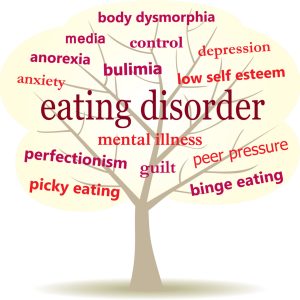How to Screen for Eating Disorders
This week is National Eating Disorder Awareness week, and though most people know that eating disorders exist, not many know how to screen for them in loved ones or even for themselves. Sadly, eating disorders affect over 24 million people in the United States, and only about 10% seek treatment for a high fatality mental illness like an eating disorder (https://www.dosomething.org/us/facts/11-facts-about-eating-disorders).
We live in a diet-obsessed culture where “skinny is beautiful” and desire to lose weight is the norm. Normalizing food and body obsessed cultures means that eating disorders often become overlooked and minimized. There are dozens upon dozens of psychological, social, and physical symptoms of eating disorders. Here are some ways to screen for eating disorders, including some subtle signs that are easily missed:
- Excessive concern over weight and body shape: this can include frequent weigh-ins, frequent comments about their personal body type, and “body checking” in the mirror more than usual. Individuals with an eating disorder may also fear weight gain of 3-5 pounds, which is a normal fluctuation. This would also include frequent dieting or feeling fat when reality does not match perception.
- Loss of control with food or too much control: Not all eating disorders are about food restriction (control); some are about loss of control as well, which can look like skipping meals, fasting for non-religious purposes, bingeing, or bingeing combined with purging. Binge eating disorder is sweeping the nation now and looks like loss of portion control as well as speed and pacing of eating habits. Individuals with eating disorders may also exhibit a general need for control and often have problems with anxiety.
- General rigidity with food and exercise: this may look like a rigid exercise regimen, despite other responsibilities or priorities. It can also manifest itself as rigidity in food rituals, which may look like rules about food touching, food/ingredient parings, rigidity around what time of the day to eat, which utensils to use, etc.
- Fear of eating in public: Just as it sounds, those with eating disorders may fear eating in public due to fear of shaming/judgment, desire to hide or control food rituals, or the simple challenge of eating around others due to an unhealthy relationship with food. Individuals with eating disorders may even enjoy cooking for others, but not eating with their friends. They may also deny feelings of hunger frequently.
- Physical symptoms: Digestive problems, menstrual irregularities, more frequent heartburn or headaches/pains, hair thinning, weaker immune system, dry skin, sleep problems, and general muscle weakness
- Psychological/other behavioral symptoms: Difficulty concentrating, “fogginess” or lack of clarity of thought, social withdrawal, anxiety, low self-esteem, heightened sensitivity to criticism about physical attributes, irritability, and emotional eating.
Other risk factors for eating disorders include:
- Family rigidity and lack of freedom to express emotions
- Sexual abuse history and other types of trauma
- Family history of eating disorders
- Individuals with perfectionist tendencies or anxiety disorders
- Culture/weight stigma
- Females approaching or experiencing puberty are at higher risk for eating disorders
- Sports/job involvement that emphasizes beauty, thinness, or physical image
If you or someone you know may be experiencing the above warning signs, look for help right away. Treating eating disorders early is the key to avoiding long-term effects and even fatalities. Always visit a treatment center that specializes in eating disorders. Visit the National Eating Disorder Association website for a free screening tool (https://www.nationaleatingdisorders.org/screening-tool) and other information about eating disorders and save a life! And don’t forget that God cares about our bodies, His creation, meant to bring glory to the Kingdom. You were made in the image of God, a truth that should not be hidden. Stay tuned next week for ways to support a loved one with an eating disorder.
-Mary
Additional resources and references:
- https://www.nationaleatingdisorders.org/learn/by-eating-disorder/anorexia/warning-signs-symptoms
- https://www.nationaleatingdisorders.org/risk-factors
